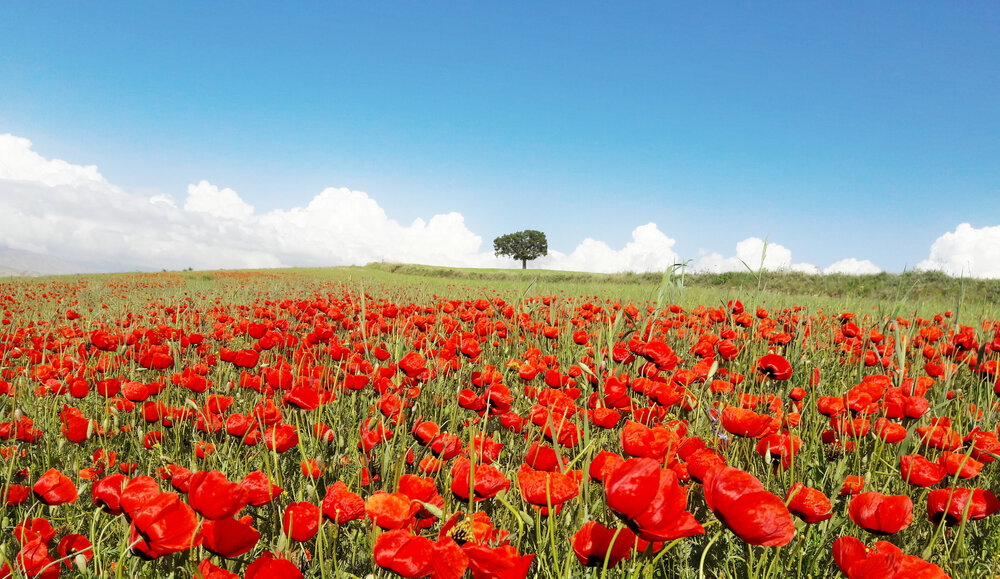A glimpse at unique Kopet Dag biodiversity hotspot

TEHRAN – Kopet Dag biosphere reserve, located in the northeastern province of North Khorasan, holds a great share of exotic and endemic plant genera and species, with natural attractions, cultural diversity, and the presence of local and nomadic communities.
Kopet Dag is a protected area stretching over 18,000 hectares of land area and is filled with thick forests and a variety of plant and animal species that received UNESCO recognition for biosphere reserves in 2018.
The Kopet Dag is a chain of mountains between the Balkans and the plateau of Iran and Turan that consists of two mountain ranges with a parallel extent covering the most surface area. The ecological region of Kopet Dag is an important part of the Irano-Anatolian biodiversity hotspot; whose primary function is the conservation of many of the endangered species in this area. The main economic activities are agriculture and livestock, according to the UNESCO website.
Biodiversity significance of Kopet Dag
There are 52 major animal species occurring in the area, including many endemic species.
Many of the endangered species are the primary focus for conservation in this hotspot, include leopard, Caspian snow-cock, wild sheep, bezoar (bearded) goat, hyena, Indian porcupine, and a number of other rare species of mammals, birds, snakes, and lizards.
This mountain range is the center of origin of many of the ancestors of domesticated plant and animal species.
Reach flora covering the international biosphere
Mountain forests and woodland regard most of the site which covers 79.6 percent of the area. The mountain corridor has been a breeding center in the area probably from the Pleistocene era. There are 169 important plant species.
The fauna and flora of Mesopotamia, which have not been able to withstand droughts in the low altitude of the adjacent land, occur in the area. The varied biodiversity is directly involved in the provision of ecosystem services. For example, aromatic plants are common resources of food, juniper woods can be used as fuel, bees and wild pollinating insects play a crucial role in agricultural crop pollination.
Fauna and flora of Kopet Dag express the mixed character of their biogeographic connections with Mediterranean and Turanian elements. The Kopet Dag flora is especially rich in plant diversity, of which 332 species are endemic.
Due to a good annual rainfall of an average 450 mm a year, the vegetation of Kopet Dag is desirable. The sparse forests of Greek juniper, hawthorn, wild barberries, etc. cover Kopet Dag Mountains.
Challenges facing the region
The most important challenge facing the region was unsustainable infrastructure development and tourism, heavy logging and overgrazing by outsiders. Severe soil erosion is caused when these activities occur in the upper watersheds and rangelands, in addition to mud floods, destroying ecosystems, and habitats.
The weakening of customary laws and governance systems of the tribes has resulted in increased poaching and degradation of bio-cultural diversity.
The decline in wildlife populations, especially valuable mammals such as leopards, urials, and goats due to unauthorized hunting and destruction of their habitats.
Expansion of communication networks in some of the unique natural areas that the loss of coherence between natural and environmental components.
Pollution of aquatic and terrestrial biomass reserves of Kopet Dag Biosphere Reserve due to the excessive use of fertilizers and pesticides.
Iran’s biosphere reserves
The main characteristics of biosphere reserves are achieving the three interconnected functions including conservation, development, and logistic support and outpacing traditionally confined conservation zones, through appropriate zoning schemes combining core protected areas with zones where sustainable development is fostered by local dwellers and enterprises with often highly innovative and participative governance systems.
Iran has 13 UNESCO recognized biosphere reserves including Arasbaran, situated in the north at the border with Armenia and Azerbaijan; Arjan and Parishan, in the Zagros Mountains, situated to the very south of the Zagros Mountains, close to the Persian Gulf; Golestan, located in the north; Hara, located in the Mehran River delta in the south near the Straits of Khuran between Qeshm Island and the Persian Gulf; Kavir, in the Anatolian Iranian Desert; Lake Urmia, in the northwest; Miankaleh, in the southeastern region of the Caspian Sea; Touran, in the central province of Semnan; Dena, in the Central Zagros Mountains; Tang-e-Sayad and Sabzkuh, in the southeastern Chahar-mahal and Bakhtiari province; Hamoun in southeast which includes both terrestrial and wetland ecosystems; and Kopet Dag.
FB/MG
